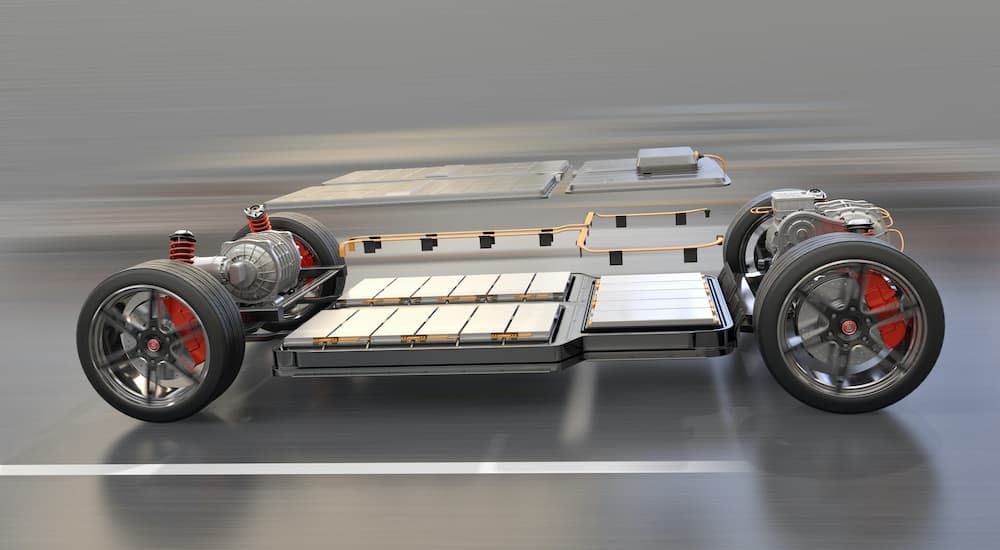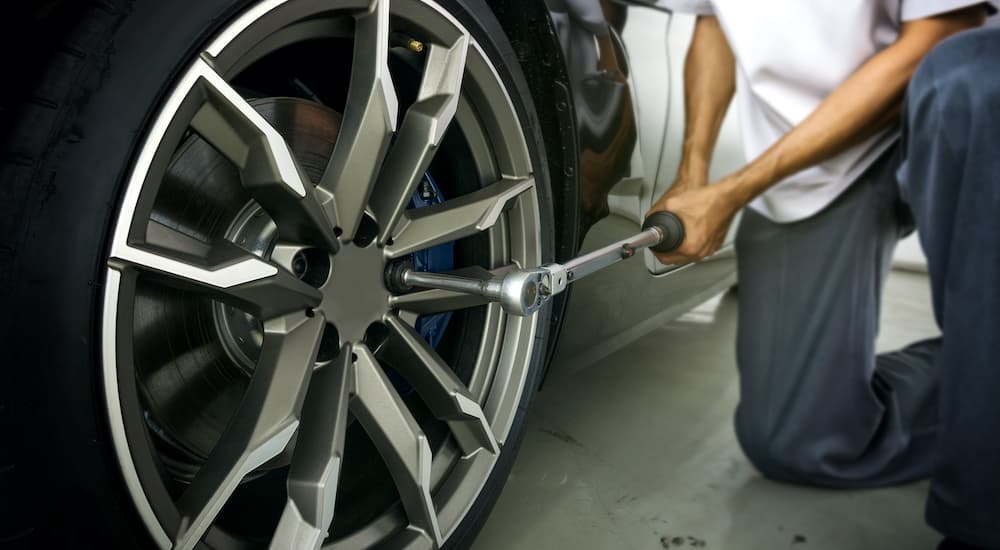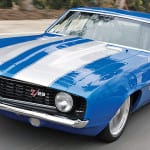Automotive jargon can almost feel like its own language. However, as confusing or distancing as auto talk may be to those not in the know, a solid understanding can serve your unique interests…and your wallet. One who shows up to a Chevy dealer, for example, without at least a basic understanding of auto terminology is setting themselves up for some costly mistakes. But, let’s face it: in such a rapidly growing market marked with constant changes, sometimes even the most common auto jargon can get confusing even for a seasoned car buyer.
Knowing the etymology, or origin, of common auto terms can go a long way toward helping you make key decisions: What features are you looking for? What does a certain figure mean? Where are certain parts located on the vehicle? And, why or why not might these details be important for your driving lifestyle?
As auto buyers, you hear all kinds of terms thrown about. What is a timing belt exactly, and why should I care? Where are the Bevel Gears? Or, why do I even care about the chassis?
It would be helpful to know that ‘chassis’ comes from the French word ‘châssis,’ meaning ‘frame.’ So naturally, you could assume that the chassis of a car would relate to the frame the body was sitting on. In the case of an SUV or crossover, that would be important when buying the vehicle, as a crossover sits on a car chassis, while an SUV sits on a truck chassis.
The origins of some of the most common car terms can prove to be a useful bit of information when you’re looking into buying a new car. And sometimes, these origins can turn out to be fun pieces of trivia, which you might have never known otherwise. So it can be well worth the effort to look into frequently used terms—and find out exactly where they came from.
Chassis
Start with the very common term ‘chassis.’ This term was used earlier to refer to a sliding frame for a gun or a window frame. If you look at the origin of the French word, it comes from the Latin ‘capsa,’ which simply means ‘box case.’ Today, ‘chassis’ refers to the body or frame of a car or truck.
Axle
A word that is tossed around a lot, ‘axle,’ has some interesting beginnings, stemming from the combined Old English word ‘eax’ and the Old Norse word ‘öxull.’ Then, it later combined to form a new word in Middle English that we know today: ‘axle.’ The axle refers to the horizontal rod which the wheels revolve on. However, most modern cars do not have traditional axles, leaving this feature mostly found on pickup trucks and other heavy-duty vehicles.
Torque
Another term that’s used in nearly every car description is ‘torque.’ This term is repeated and emphasized, but really something a lot of first-time car buyers simply brush off, not knowing what it’s referring to. They just know they want a vehicle with a lot of torque, whatever it is.
To simplify a complicated topic, torque is how much rotational force an engine can exert. The word ‘torque’ comes from the Latin word ‘torquere,’ which means to twist, rotate, torture, or distort—among other things. This makes sense when you think about things like the torque-wrench, or the medieval necklaces and bracelets of twisted silver or gold, which were also called torques.
Coupe
Thinking about getting a speedy, sporty coupe? Well, make sure you’re ready for tight space and a low riding experience. The term ‘coupe’ comes from the French words ‘carrosse coupe,’ which basically refers to a ‘cut-off carriage.’ This was a low-to-the-ground, two-seater carriage with a spot for the driver outside.
The term was adapted near the turn of the century to refer to the new Coupe de Ville town car. The earliest models of the Coupe allowed for an exterior driver with two passengers in the enclosed cabin. Traditionally, coupes have two doors, but modern manufacturers are stretching the term to include four-door cars and even SUVs that have a sloping rear roofline.
Hemi
A term we think of as signifying power is HEMI,’ which comes from the Greek term ‘hemi,’ meaning ‘half.’ But when we think about a truck HEMI, this refers to the hemispherical combustion chamber of the cylinders. So, a more specific definition makes more sense. ‘Hemisphere’ comes from the Greek ‘hēmisphairion.’ If we dissect the words ‘hēmi’ and ‘sphaira,’ we get the words ‘half’ and ‘sphere,’ both of which directly relate to the modern term ‘HEMI,’ a powerful series of truck engines.
Alternator
The word ‘alternator’ is a well-known term among mechanics. If you’re unfamiliar with cars and someone says, “Maybe it’s the alternator,” when your car doesn’t start, chances are you’ll stand there and nod your head thinking, “Why is it always the alternator, or the starter, or some other part I don’t know the name of?” The origins of ‘alternator’ are humble but also help explain its job in a car. Coming from the Latin ‘alternate,’ it means to ‘do by turns’ or one after the other. In a vehicle, the alternator is a generator responsible for keeping the battery charged.
Clutch
Another term used often is ‘clutch,’ which has nothing to do with purses, but stems from one of several origins, the most likely being the Old English ‘clyccan,’ which is to ‘bring together.’ Later on, it became a term used in mill-works, and wasn’t adapted to automotive use until the turn of the twentieth century, where it came to mean a device that brings things, like gears or mechanical parts, together. In a car, the clutch is a grippy plate that can engage or disengage to transfer power. The word is also used to refer to the third pedal in a manual car, which operates the clutch for the transmission.
Ignition
Ignition, a term everyone is familiar with, came from the French word of the same spelling, which originally was derived from Latin ‘ignire,’ meaning to ‘set on fire.’ So no mystery there as to where the term came from. The word can mean a number of things, all having to do with fire or combustion. At first, it referred to the combustion when a musket was lit, and later referred to a combustion engine. Whether you turn a key or push a button, the ignition system activates an electric starter motor that starts up the engine.
Transmission
The term ‘transmission’ is fairly straightforward as you can expect, coming from the Latin term ‘transmissionem,’ which indicates movement or transferring from one place to another. In the case of a car, the transmission uses a number of gear ratios to turn the engine’s rotational energy into something that is usable at the wheels. How this works depends on the type of transmission, as there are several different designs in use today. There is no simple way to gauge transmission quality across all vehicle makes and models, so the best way to learn about a specific vehicle’s transmission pros and cons is to look up a review. (Perhaps one of my colleagues here at AutoInfluence has shared their thoughts on the matter.)
Radiator
The much-needed car ‘radiator’ came about from a mechanical device that looked like a stove, which transferred heat from steam out into a room. A similar mechanism was installed in automobiles at the turn of the century to help keep a combustion engine from overheating. A typical radiator is composed of a huge number of tiny pipes that take hot coolant from the engine and allow it ‘radiate’ the heat into the air, releasing it and cooling the engine.
Automobile
Probably one of the most common auto terms is that of ‘automobile’ itself. This everyday word is a combination of Greek and French. ‘Autos,’ from Greek, means ‘moved of itself,’ while ‘mobile,’ from French, means ‘moving.’ So, an independent self-mover pretty much sums up the spirit of the automobile and its drivers.
Knowing the origins of everyday terms can give buyers and drivers a better understanding of vehicles and how they work—plus what a given model has to offer them in terms of durability or performance.






